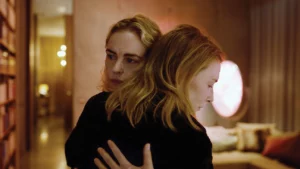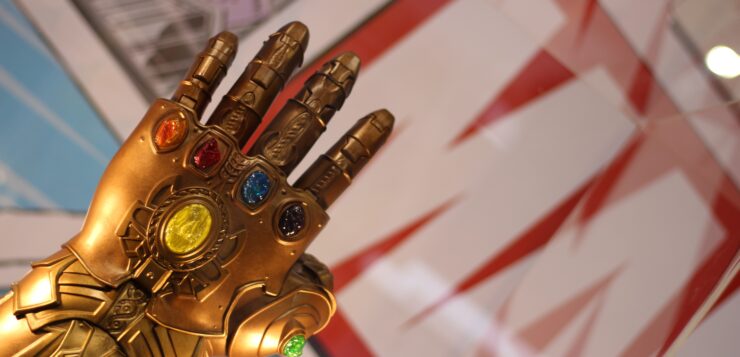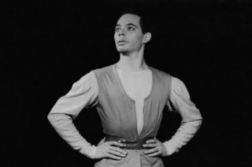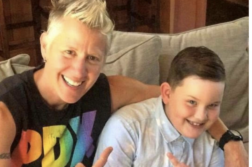
In April 2019, I wrote an online essay titled “If This is Freedom Enslave Me,” which accompanied my short story, “Please,” about a cynical, cruel, older gay couple who take advantage of a poor young gay man. The premise was that the majority of LGBT characters in literature and film are either saints or victims. Publishers and producers seem too timid to permit us more complex roles, like villains, or at least flawed antiheroes. In the four years since the publication of my essay and story, I have written my own novel, Performer Non Grata (Rebel Satori Press), which explores the narcissism—and even sociopathy—of gay male characters. In the novel, my protagonist’s vanity borders on the maniacal, and any threat to his flimsy ego elicits a sadistic response.
Since 2019, there have been several books and movies released that reflect a positive cultural shift and provide more room for morally questionable queer expression, not least of which is Christopher Bollen’s 2020 literary crime caper, A Beautiful Crime, and Todd Field’s 2022 cinematic social puzzle, Tár.
This question of sanctified representation comes from a place of reverence, but maybe also fear. There is a valid concern that portraying an LGBT character as foul in fiction could make our place in the world tenuous. After all, there is already a sizable number of reactionaries who think those in this community are deviant groomers seeking to pervert young minds; they think that drag queens are dangerous, and literature by or about marginalized people is the devil’s work, amongst other things. It’s also only until recently that LGBT characters—or at least those who were queer-coded—were almost exclusively villains, like Norman Bates in Psycho, Catherine Tramell in Basic Instinct, Buffalo Bill in The Silence of the Lambs, and even Disney cartoons, such as Scar in The Lion King, Ursula in The Little Mermaid, and Jafar in Aladdin.
When I reviewed Christopher Bollen’s A Beautiful Crime for Newsday, I applauded Bollen for casting his gay protagonists Nick and Clay as “morally ambiguous criminals plucked out of the ghettos of victimhood or sainthood.” A Beautiful Crime follows Nick Brink and his boyfriend, Clay Guillory, as they travel from New York City to Venice. In Italy, the young lovers dodge their volatile pasts while selling counterfeit art to Richard Forsythe West, a brassy, clueless American living off his savings in a stately palazzo. Things get murky as Nick and Clay’s intelligence prove a poor match for the situation they’ve created. The vanity, entitlement, and narcissism of the young, gay characters are unattractive traits, though also real. That they are also disadvantaged only fuels their desire to set fire to the world, or at least to the obstacles that emerge in their path. Bollen challenges us to understand Nick and Clay’s actions. We end up not only understanding, but also caring about, these thieves and murderers. It’s one thing for a storyteller to create likable characters who behave honorably; it’s a much taller order to create scoundrels that we care about.
This desire for likable characters is foolish. Margaret Atwood once said that a well-behaved character is uninteresting and not worth reading about. Cultural phenomena like the roommates in the television series Friends, the children wizards of Harry Potter, or the superheroes of the Marvel Cinematic Universe, have conditioned viewers and readers to expect niceness and likability. It is as though we collectively demand protagonists we can root for, identify with, and might want as roommates. But the characteristics we may want in a companion are not the same as the ones we want, or should want, in our characters. Where would world literature be without Bigger Thomas, the Underground Man, Raskolnikov, Miss Havisham, Humbert Humbert, Tom Ripley, Alexander De Large, Lady Macbeth? We don’t like them, but we care enough to invest ourselves in their stories. Let the same patience and empathy apply to badly behaved LGBT characters that occupy fictional narratives, on- and off-screen.

Lydia Tár in Todd Field’s exceptional feature, Tár, is an uneasy thrill because the protagonist operates without a socially imposed consciousness. She exists as she is: selfish, egotistical, and self-constructed. Many have complained that the character feels false, stilted, and doesn’t speak like normal people would. Her affectations are carefully considered, and she’s disingenuous with her partner and friends. She’s a character who’s wholly made up, self-invented, and played to the hilt with a haughtiness that feels theatrical. She is ruled by entitlement and arrogance. Perhaps she uses her identity as a woman and as a lesbian to ride roughshod over others and exploit the young women who idolize her. After all, such marginalized folk are beyond reproach, no? For a straight man to tell such a story is brave, and that courage pays off. Tár offers the kind of culturally risky filmmaking we rarely see anymore, especially at such a level with a brilliant actor like Cate Blanchett.
Queer writers can appreciate the fearlessness of authors like Jean Genet in Our Lady of the Flowers, or Hervé Guibert in Crazy for Vincent, to present queer characters every bit as vile and inglorious as their heterosexual counterparts, to have the freedom from ephemeral political reaction to be “bad” and unlikable, to be counted among the mainstream deplorables without sanitization or sainthood.
 Brian Alessandro is co-editor, with Tom Cardamone, of Fever Spores: The Queer Reclamation of William S. Burroughs (Rebel Satori Press) and has co-adapted, with Michael Carroll and illustrator Igor Karash, Edmund White’s A Boy’s Own Story as a graphic novel for Top Shelf Productions. His latest novel is titled Performer Non Grata (Rebel Satori Press).
Brian Alessandro is co-editor, with Tom Cardamone, of Fever Spores: The Queer Reclamation of William S. Burroughs (Rebel Satori Press) and has co-adapted, with Michael Carroll and illustrator Igor Karash, Edmund White’s A Boy’s Own Story as a graphic novel for Top Shelf Productions. His latest novel is titled Performer Non Grata (Rebel Satori Press).








Discussion1 Comment
Excellent and well considered essay, Tom. I wrote about “villainous” gay men and always got flak for it. My new collection, (warning: self-promo ahead) Six Strange Stories and an Essay on H.P. Lovecraft contains the story “Flawed,” where I get the reader to actually cheer for the bad gay as he does his dirty work.